Roosevelt Dimes have been a mainstay in circulation since 1946, debuting as a tribute to President Franklin Delano Roosevelt. The dime was a clear choice for memorializing the 32nd president, who was diagnosed with polio. He helped start the March of Dimes organization, which supported the eradication of polio and raised funds for the eventual creation of the polio vaccine.
The Roosevelt Dime has seen very few changes in its nearly 80 years of production. The series did see a transition from a 90% silver composition to copper-nickel clad for circulating and most proof issues beginning in 1965, some minor die enhancements, and the relocation of the mintmark from the reverse to the obverse. However, the coin’s primary design has remained exactly the same for its entire production life. This is a claim that no other United States coin currently in production for circulation can make.
The Lincoln Cent has undergone multiple reverse transformations since 1959, the Jefferson Nickel saw a series of revisions from 2004 to 2006, and the Washington Quarter has certainly seen its fair share of obverse and reverse design changes since 1999. Even the Kennedy Half Dollar, seldom encountered in circulation anymore, sported a special Bicentennial design in the mid-1970s, and the dollar coin – no longer officially produced for circulation – has also donned numerous designs each year since the mid-2000s.
But the Roosevelt Dime just keeps doing its thing. Some may call it a humble coin, certainly the smallest coin in circulation these days in terms of its physical proportions. Measuring just 17.9 millimeters in diameter and presently weighing 2.27 grams, it’s smaller and lighter than even the one-cent coin. It also garners a relatively smaller number of collectors than, say, the Lincoln Cent and Washington Quarter.
Yet, the Roosevelt Dime offers a ton of potential collecting avenues for numismatists. A standard date-and-mintmark set can be an ideal pursuit for collectors who don’t want to spend thousands of dollars or many years completing a nice set of contemporary coinage. However, those who are financially suited to do so and have the patience to invest in completing an exceptional set of Roosevelt Dimes will find this series right up their alley.
No Dime Spared
Roosevelt passed away on April 12, 1945, at the age of 63 from a massive intracerebral hemorrhage. Amid the international mourning upon the passing of the four-term president who helped carry the nation through some of the toughest years of the Great Depression and steadfast into World War II, calls to place the likeness of Roosevelt on the dime grew louder.
Louisiana Representative James Hobson introduced a Congressional bill supporting the Roosevelt Dime on May 3, 1945. Just two weeks later, on May 17, Treasury Secretary Henry Morgenthau stated that plans would move forward on replacing the Mercury Dime with a coin honoring Roosevelt. The Treasury had the leeway to make such a change, as the Mercury Dime had been in production since 1916 and thus had fulfilled the 25-year minimum period after which a coin design could be changed without congressional approval.
Chief Engraver of the United States Mint John R. Sinnock was tasked with the work of creating the design for the new Roosevelt Dime, with his assistant, Gilroy Roberts, helping complete many aspects of the project. Sinnock proposed a variety of designs, among them models bearing an obverse design of Roosevelt paired with a reverse depicting a hand grasping a torch along with olive and oak branches. The Commission of Fine Arts, which provides artistic feedback but not prescriptive mandates on coin designs, wanted to see revisions to the Roosevelt obverse as they felt it needed “more dignity.”
Sinnock made further refinements to his design, with continued back and forth between him, Mint Director Nellie Tayloe Ross, and the Fine Arts Commission, the latter suggesting a design competition to land just the right design for the new Roosevelt Dime. However, the United States Mint endeavored to complete the design process by the end of 1945 so the new dime could be released in time for a March of Dimes campaign in 1946. By the start of the new year, refinements to the design and placement of inscriptions were perfected, and the coin was officially released on January 30, 1946, the day that would have marked Franklin’s 64th birthday.
The Roosevelt Dime’s Long Journey
The Roosevelt Dime’s debut early in 1946 closed the books on the Mercury Dime. This left the Lincoln Cent and the Walking Liberty Half Dollar the last remaining coins in circulation bearing designs from the early 20th-century era known as the Renaissance of American Coinage. The Walking Liberty Half Dollar would also be replaced within a couple of years by the Franklin Half Dollar, coincidentally another coin designed by Sinnock, who died in 1947 and never saw his half dollar unveiled to the public in 1948. Interestingly, it was Sinnock’s initials that triggered some of the biggest buzz upon the release of the Roosevelt Dime.
When the Roosevelt Dime was released bearing Sinnock’s calling card in the form of “JS,” much of the American public, wary of communism during the early days of the Cold War, believed the designer’s initials were part of a subversive plot to honor Soviet leader Joseph Stalin. The U.S. Mint launched a massive campaign to educate the public on the true meaning of the “JS” initials, but the rumors persist even today that the offending initials had conspiratorial origins.
By the late 1940s, collectors were beginning to pay more attention to the Roosevelt Dime’s collecting merits, and the release of the relatively low-mintage 1949-S definitely merited some interest. These and other scarcer semi-key dates, such as the trio of similarly low-mintage 1955 emissions from the Philadelphia, Denver, and San Francisco Mints, were hot commodities during the collecting boom of the late 1950s and early ‘60s when late-date uncirculated rolls topped many numismatic want lists.
A burgeoning coin shortage in the early 1960s had developed into a national problem by 1963, when silver prices climbed to the point that the 90% silver dime, quarter, and half dollar were worth more for their melt value than as coinage. Millions were pulling these silver coins from circulation, causing an unsustainable situation where the U.S. Mint couldn’t keep enough coins in circulation, their backs against the wall of a shrinking silver reserve and rising bullion prices. Congress responded with the Coinage Act of 1965, authorizing the debasement of the dime and quarter with a new copper-nickel clad composition and reduction of the silver content in the half dollar to 40% purity.
Along with the compositional changes to the dime, quarter, and half dollar, the U.S. government removed mintmarks from circulating coinage to reduce the number of coins being pulled from circulation by collectors. The U.S. Mint also placed a moratorium on production of annual mint sets and proof sets, opting for a single product known as a Special Mint Set that contains one example of each circulating coin in a special finish.
Upon the return of mintmarks and the regular field of annual mint and proof sets in 1968, the mintmark had moved from its original location near the bottom left of the torch on the reverse to the obverse, just above the right side of the date. Meanwhile, Proof Roosevelt Dime production had moved from the Philadelphia Mint to San Francisco, along with the proof strikes of other contemporary coinage.
Production of the Roosevelt Dime continues to this day with few other changes to speak of, though the Roosevelt Dime began sporting a P mintmark from Philadelphia beginning in 1980 (a change affecting all Philly-minted coins from the nickel on up). Minor die enhancements have also been made throughout the years to refine the appearance and strike of this long-running coin. Changes are slated in 2026 when all circulating coins will sport a special Semiquincentennial design honoring the nation’s 250th anniversary. Until then, the Roosevelt Dime is planned to remain virtually unchanged from its original appearance in 1946.
Surprising Series Challenges
On its surface, the Roosevelt Dime appears to be a rather simple series for a collector to complete. After all, the run is mainly composed of a fairly straightforward lineup of issues, with most pre-1965 dates ordered into the trinity of P-D-S variants, while business strikes from 1968 to the current are usually P-D binary, struck alongside the S-mint proofs. There are no major regular-issue rarities, with the scarcest dates numbering well into the millions mintage-wise and none standing out with three- or four-figure prices in standard price lists.
But that’s where predictability fades away. A more thorough look at the series reveals a much more astonishing picture. The Roosevelt Dime is one of the most complicated contemporary series in the U.S. catalog. For starters, the past 30 years of the Roosevelt Dime series has spawned a cluster of atypical issues, such as the 1996-W, 2015-P Silver Reverse Proof, 2015-W Proof, and 2018-S Silver Reverse Proof.
Then there are the varieties. Oh, the varieties! There is no shortage of varieties with the Roosevelt Dime. Among the silver classics are the 1960 Proof Doubled Die, 1963 Doubled Die Reverse, and 1964-D Doubled Die Reverse. The clad strikes offer a slew of curiosities, too… Several of them are missing their mintmarks!
The Case(s) Of the Missing Mintmark
While no-mintmark coins aren’t unheard of in American numismatics (just think of such modern examples like the 1990 No S Proof Lincoln Cent and 1971 No S Jefferson Nickel), they’re certainly a strange breed. How mintmarks went absent in the striking process may leave some scratching their heads. In short, these missing-mintmark aberrations occurred because coiners at the mint neglected to punch the mintmark onto the working dies – back when this was done by hand. But they do result in some fascinating numismatic oddities that are very rare, quite valuable, and highly collectible.
The most common and affordable of these missing-mintmark Roosevelt Dimes is the 1982 No Mintmark circulation strike, lacking its P mintmark. It is the only circulation-strike Roosevelt Dime absent its intended mintmark, and they were most likely made in very large numbers, as several thousand turned up in the months immediately following its production. Many were distributed as change at Cedar Point amusement park in Sandusky, Ohio, with others turning up in nearby Toledo and a little farther away from Pittsburgh, Pennsylvania. A few others were found in Boston, Massachusetts, but all were traced to the Cleveland Federal Reserve branch facility.
Two variants are known for the 1982 No Mintmark Roosevelt Dimes: a weak strike and a strong strike. The strong strike retails for around $250 in MS65, while the weak strike fetches about half as much in the same grade.
Other Roosevelt Dimes sans mintmark are worth far more, and one variety is worth more than the average house in the United States!
Let’s begin with the 1968 No S, a curious variety that became the first proof lacking its mintmark during the era of proof coinage production at the San Francisco Mint. Examples are rare, with PCGS grading only a dozen proofs and about a half dozen cameo proofs, with none designated as deep cameos. Prices trend around $20,000 in PR67, with examples in PR68CAM fetching closer to $35,000 – on the rare occasion any of these coins cross the auction block.
The next no-mintmark proof dime was born just a couple of years later in 1970, though this variety offers many more specimens than the 1968 No S. Hundreds are believed to exist, with examples in PR68 going for $700 and those in PR69CAM fetching $3,600. Of similar scarceness is the 1983 No S, which commands $650 in PR68DCAM and $6,000 in PR70DCAM.
The 1975 No S Roosevelt Dime is one of the great rarities of the modern era, with just two known specimens and a six-figure price. Perhaps one of the most remarkable things about this particular variety is that it was first discovered in 1977. Just one other confirmed example has been found since, speaking to the elusiveness of this variety.
While both specimens had traded in private sales, its first public offering came in only 2011, when a specimen graded PCGS PR68 notched an astounding $349,600 in a Stack’s Bowers Galleries auction. The next public transaction came in a 2019 Heritage Auctions event, with the PCGS PR68 specimen hammering for $456,000. This half-million-dollar coin boasts a mystique unlike any other coin of its vintage, with many wondering if a third example is floating around somewhere in a long-forgotten 1975 Proof Set.
The Importance of Full Bands
Pricey figures aside, the Roosevelt Dime has seen the rise of another challenging niche in recent years as it relates to collectors vying for specimens with the Full Bands designation. PCGS grading standards designate “Full Bands for Roosevelt Dimes that grade MS60 or better and show full separation of the upper and lower horizontal bands of the torch on the reverse. To qualify for this designation, a coin must also show no significant cuts or marks across the horizontal bands.”
As with other series whose coins are enhanced in collectibility by the presence of entire detail, the Full Bands designation is earned by the coin having received a virtually complete strike and isn’t itself a necessarily scarce attribute. However, certain circulation-strike issues carrying these details are rare because they are notorious for having yielded softer strikes overall, with few known specimens carrying these sharper details.
Some issues are far more likely than others to bear the Full Bands details, with some pieces selling for nominal premiums in FB over non-FB counterparts and others taking exponentially higher sums with this strike detail intact. The bifurcation of Roosevelt Dimes designated either Full Bands or not has created another level of challenge for Roosevelt enthusiasts, some of whom now collect only Roosevelt Dimes graded with the “FB” designation.
Tough FB dates are scattered across the series, with multiple dates in the 1950s, ‘60s, ‘70s, ‘80s, and even into the ‘90s going for anywhere from $500 to $5,000 or more in the range of MS67FB or better. One of the most valuable FB issues is the 1949, which retails for around $11,500 in MS68FB.
Collecting the Roosevelt Dime
We’ve already seen how the Roosevelt Dime affords collectors an incredible number of scarce dates, rarities, and a trove of other numismatic surprises. But what does all of this mean for collectors? For one, the Roosevelt Dime is a versatile series, with something for everyone of any skill and budget level. Surely, a nice set of Roosevelt Dimes collected by regular-issue date and mintmark in run-of-the-mill proof and uncirculated grades can be assembled for south of $1,000.
However, collectors who want to make a run at something unmatchable can easily spend many years and many hundreds of thousands of dollars by building a complete set that encompasses every date, mintmark, and variety – including the 1975 No S Proof. The PCGS Set Registry hosts Roosevelt Dimes sets of such prestige and complexity, though there are many other avenues one can take in building a respectable Roosevelt Dime set that doesn’t require the 1975 No S, let alone any of the other expensive varieties.
The PCGS Set Registry offers more than 30 different kinds of Roosevelt Dime categories of virtually every permutation. Which sets are the right ones for you?
That’s the question the Roosevelt Dime begs you to answer!
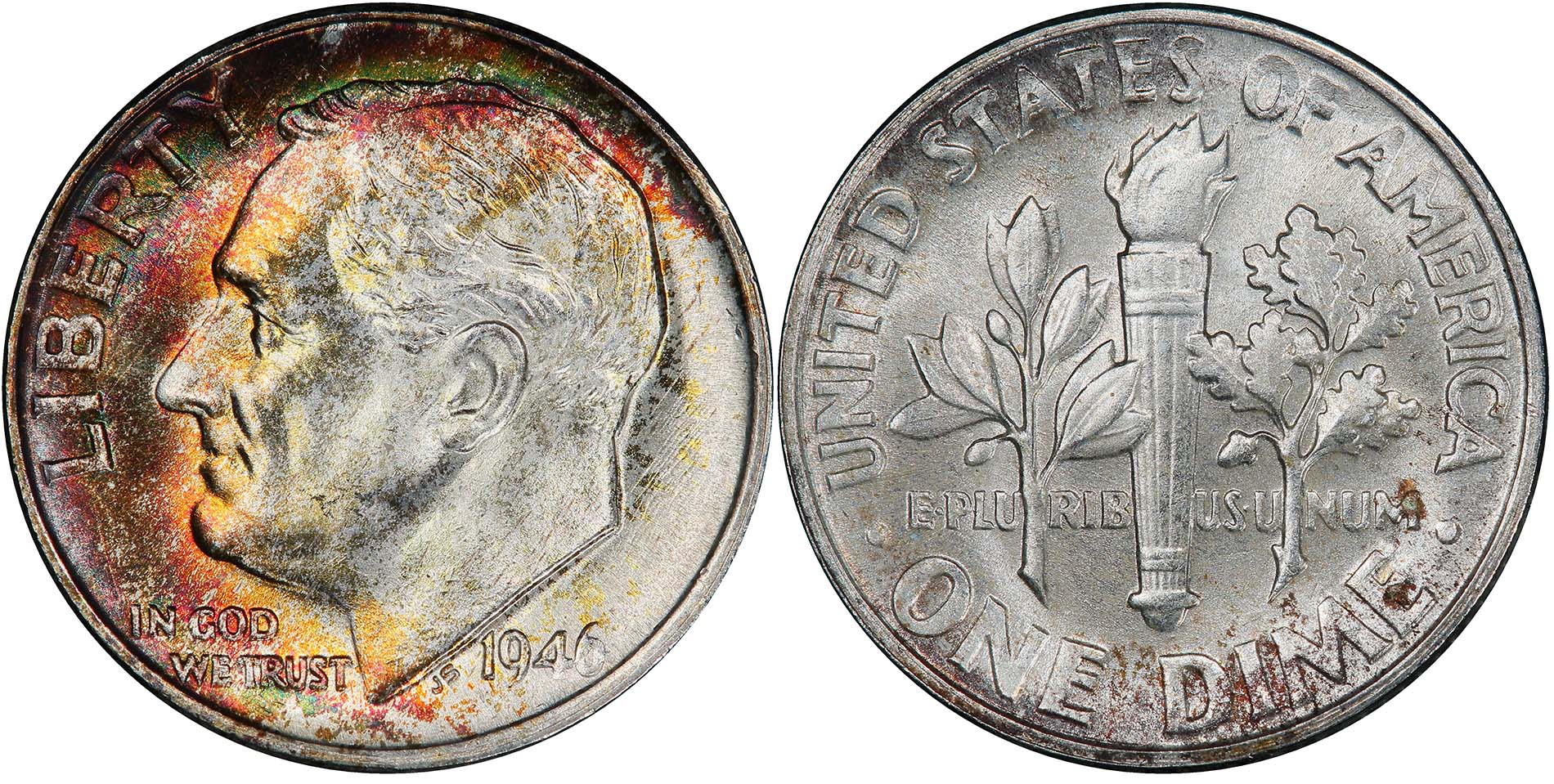



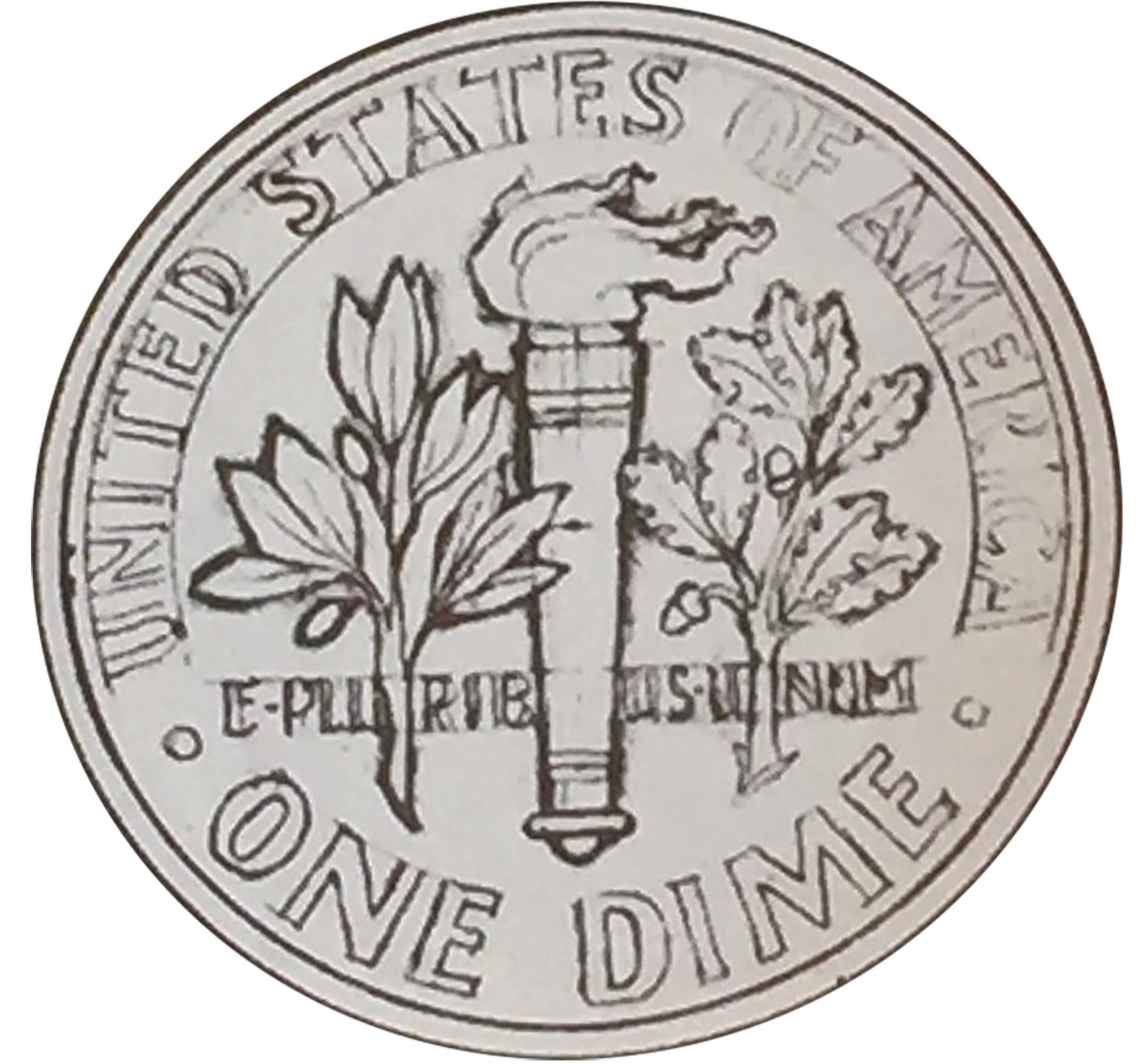
















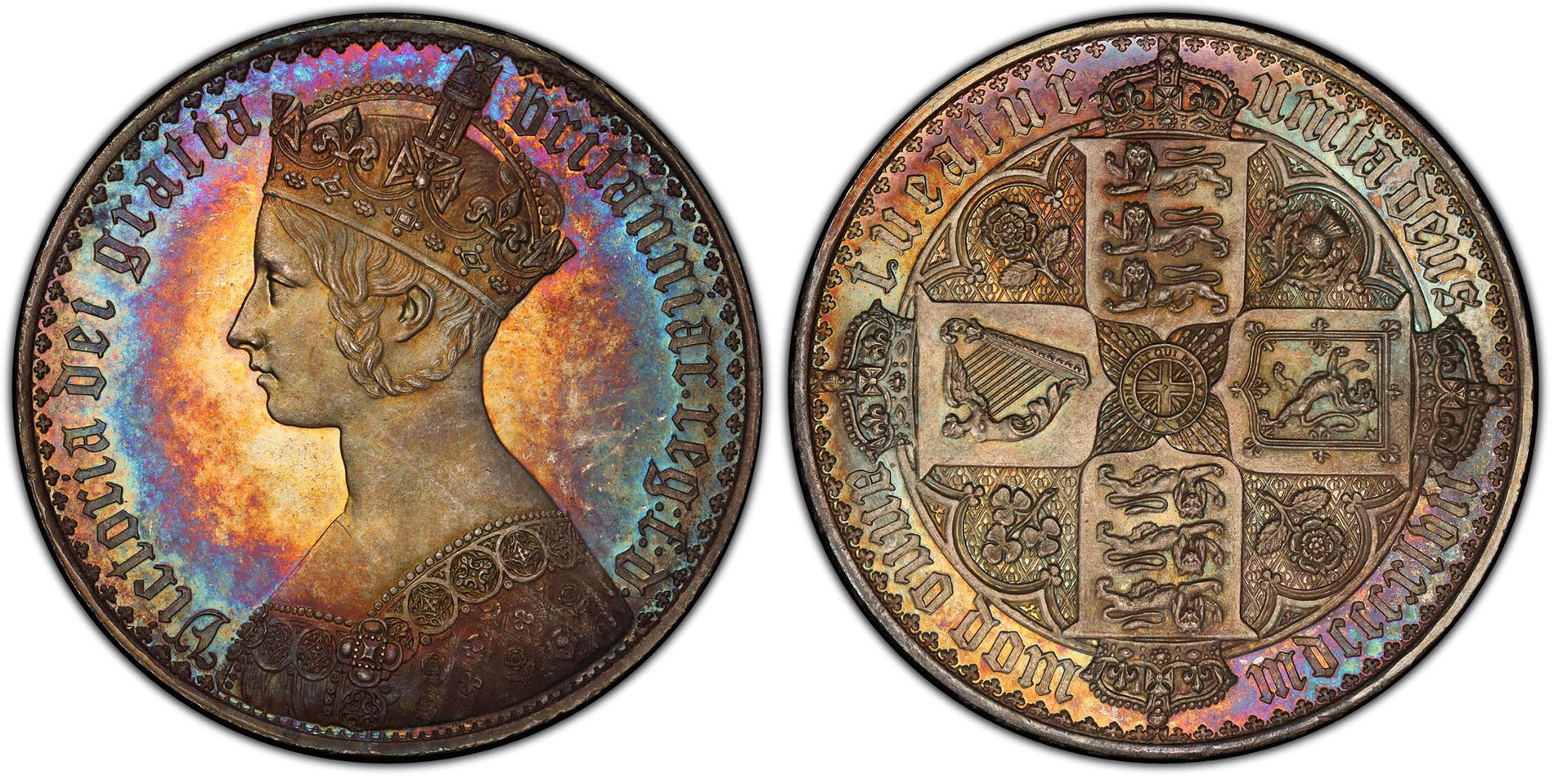


 Copper & Nickel
Copper & Nickel
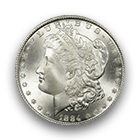 Silver Coins
Silver Coins
 Gold Coins
Gold Coins
 Commemoratives
Commemoratives
 Others
Others
 Bullion
Bullion
 World
World
 Coin Market
Coin Market
 Auctions
Auctions
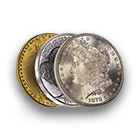 Coin Collecting
Coin Collecting
 PCGS News
PCGS News